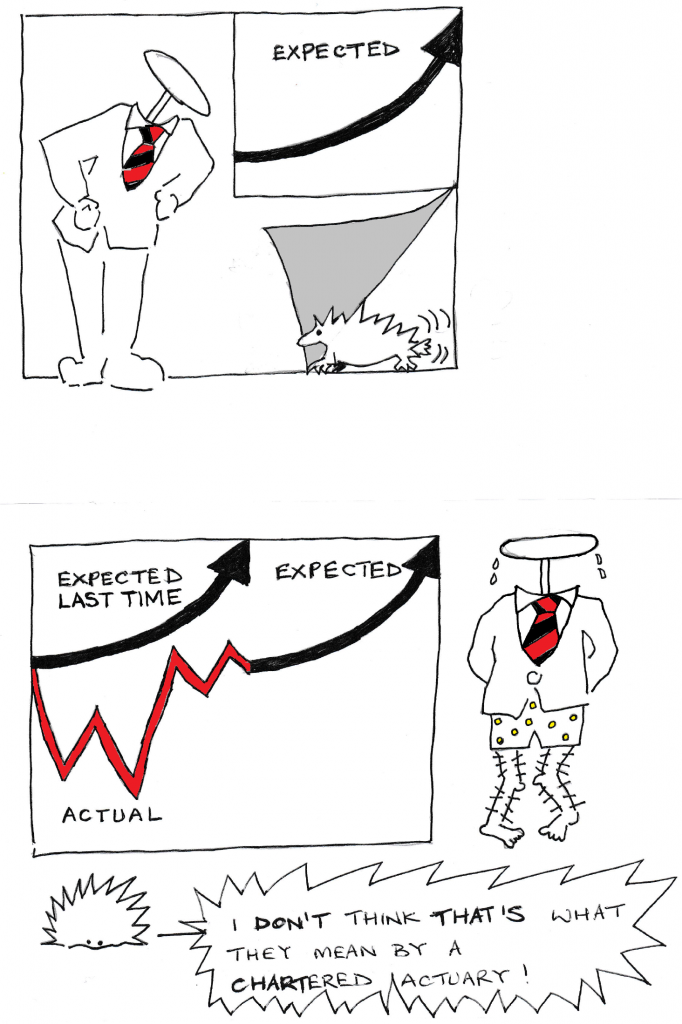
I originally talked about Chartered Actuary status (here, with the cartoon above) when the Institute and Faculty of Actuaries (IFoA) first proposed the idea and set up a consultation in 2018. I said then that sometimes an idea comes along that seems so obviously good that you wonder why it hasn’t been done a long time ago.
Four years on from the retreat from the proposal following the slenderest of straw polls offering some challenge, and it remains a good idea. There are still relatively few full actuarial roles available for associates and many firms still assuming a default career path of continuing to fellowship.
There are some differences this time however:
- There will be two chartered actuary designations: Chartered Actuary (Fellow) and Chartered Actuary (Associate), with the hope that the FIAs who were most concerned with maintaining their distance from AIAs last time will now support the proposal. The original proposal suggested Chartered Actuary (CAct) would be a single distinct qualification, a required qualification point for all student actuaries to reach before going any further and globally recognised as the generalist actuarial qualification from the IFoA. This approach has been abandoned, with no requirement to complete the core curriculum before tackling specialist modules. It will be interesting to see whether Chartered Actuary (Associate) will be seen as a destination in its own right, or just a change of letters. This will depend on all of us within the profession (see below).
- The environment we are operating in has certainly changed, with the replacement of our regulator, the FRC, by the Audit, Reporting and Governance Authority (ARGA). One of the concerns that the IFoA were looking to address in 2018 was that another, much larger, profession, could pose an existential threat. If actuaries have a unique skill set, which is likely to be lost to a wide range of businesses and other sectors if it is unable to meet the demand for those skills due to a simple lack of numbers, then the need to take any perceived barrier to practise away from our emerging young professionals is clear. The move from FRC to ARGA does not remove this threat and there also remains in the regulatory proposals to date the threat of differential regulation, where actuaries are regulated more heavily than other professionals doing similar work could price us out of markets where we have value to add. The profession therefore needs to grow to increase our voice and influence over the future regulation of the profession.
- We have acknowledged the impact of the Great Risk Transfer within the finance sector, but in my view the impacts more generally of the increased individual risks and uncertainties millions of the UK population face as energy, food and housing costs escalate need to be faced up to by our profession. For that we need to continue to be a destination of choice for a growing number of your people with a widening range of backgrounds and experiences.
So what do we need to do to make this a change worth making? We need to start behaving like a generalist actuarial qualification is what we want, and offering roles for actuaries on completion of core practice modules in future. It will mean not necessarily insisting on further actuarial specialisation as a requirement for senior roles within our firms. It will mean getting comfortable with a much wider range of specialisms amongst those we consider to be actuaries. Some are already doing this, but most of us need to go much further. A good place to start might be the IFoA’s own website, where the Route to Becoming An Actuary still features a diagram where an IFoA Associate is shown as a milestone on the way to the final destination of becoming a Fellow.


